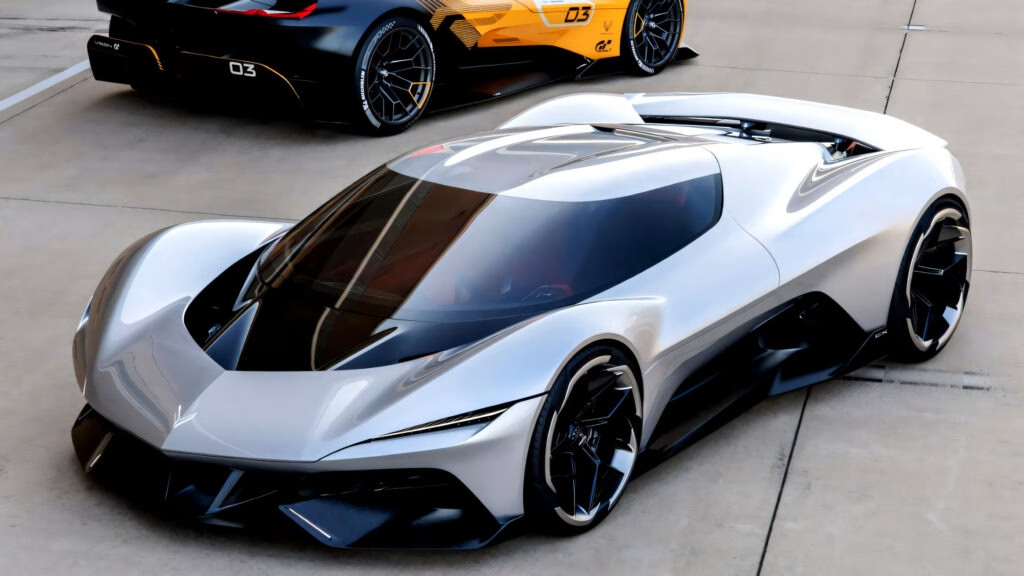What Makes the Corvette CX and CX.R Vision Gran Turismo Stand Out?
Chevrolet’s latest concept cars, the Corvette CX and CX.R Vision Gran Turismo, have set the automotive world buzzing—and for good reason. These aren’t just wild sketches or digital renderings. They’re fully realized visions from the Chevrolet Performance Studio in Warren, Michigan, designed to push the boundaries of what a Corvette can be. While neither is headed for production, Chevy’s clear about their purpose: these cars are blueprints for the future of Corvette design, hinting at the shapes, tech, and performance we might see on the road and track in years to come.
How Does the Corvette CX Redefine Electric Hypercars?
Let’s talk numbers first, because they’re jaw-dropping. The Corvette CX is an all-electric, all-wheel-drive hypercar boasting over 2,000 horsepower. That’s not a typo. Four electric motors, powered by a 90 kWh lithium-ion battery, work together to deliver torque vectoring to all four wheels. For context, that’s more than double the output of most current supercars, and it puts the CX in the same performance conversation as the world’s most elite EVs.
But it’s not just about brute force. The CX’s design is a masterclass in aerodynamics. With a height of less than 41 inches, it hugs the ground like a Le Mans prototype. Active aero elements—like a front diffuser and rear wing—constantly adjust to optimize downforce and stability. Chevy even borrowed a trick from the record-breaking McMurtry Spéirling, integrating fans that pull air through the body to fine-tune the car’s aerodynamic balance in real time. The result? Pure magic. This is the kind of innovation that could trickle down to future production models, making them faster and safer.
What’s Inside the Jet-Like Canopy?
Step inside (or rather, swing open the forward-hinged canopy) and you’re greeted by a minimalist, almost sci-fi interior. Inferno Red sports seats, wrapped in silicone leather, sit low and snug. Milled aluminum and forged carbon fiber accents add a sense of occasion. The steering wheel, inspired by motorsport, features an integrated display that puts all the essentials at your fingertips. And then there’s the digital windscreen—a massive heads-up display that overlays critical info right onto your field of view. It’s easy to imagine how this tech could make its way into future road cars, reducing distractions and keeping drivers focused.
How Does the CX.R Vision Gran Turismo Take Racing to the Next Level?
If the CX is a vision of the ultimate street-legal hypercar, the CX.R is its track-obsessed sibling. Dressed in a striking black and yellow livery, the CX.R dials up the aggression with a larger front splitter, revised intakes, and a fixed rear wing. The cabin swaps luxury for purpose: lightweight carbon fiber everywhere, suede-wrapped racing seats, and a steering wheel designed for split-second decisions.
Under the skin, things get even wilder. The CX.R pairs a twin-turbo 2.0-liter V8 (running on e-fuel, no less) with three electric motors—one for each front wheel and a third integrated into the gearbox. This hybrid setup delivers a combined 2,000 horsepower, with the V8 alone churning out 900 hp. Power goes to the rear wheels via an eight-speed dual-clutch transmission, while the electric motors provide instant torque and razor-sharp handling. It’s a blend of old-school muscle and cutting-edge electrification, hinting at how future race cars might balance tradition and technology.
Will We Ever See These Cars on the Road?
Here’s the catch: neither the CX nor the CX.R is destined for your local dealership. Instead, they’ll live on in the digital world, joining Gran Turismo 7 as playable cars later this month. Chevy’s collaboration with Polyphony Digital means fans can experience these concepts virtually, pushing them to their limits on legendary tracks. It’s a clever move—one that keeps the Corvette name at the forefront of car culture, even as the industry shifts toward electrification and new forms of competition.
What Do These Concepts Mean for the Future of Corvette?
Chevrolet’s message is clear: the CX and CX.R aren’t just flights of fancy. They’re testbeds for design, technology, and performance that will shape the next generation of Corvettes. Expect to see echoes of their styling—think aggressive intakes, slender lighting, and pronounced wheel arches—on future models. More importantly, the focus on active aerodynamics, electric powertrains, and digital interfaces signals where the brand is headed.
The big takeaway? Reinventing an icon like the Corvette isn’t about perfection—it’s about smarter adjustments. Start with one change this week, and you’ll likely spot the difference by month’s end. Whether you’re a die-hard Corvette fan or just love seeing what’s next in automotive innovation, these concepts are a reminder that the future is closer—and more exciting—than we think.

